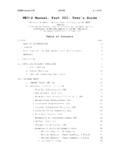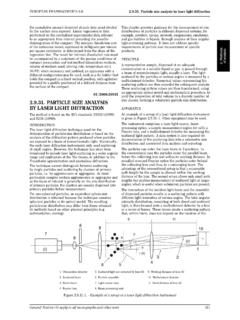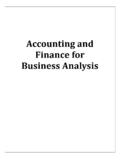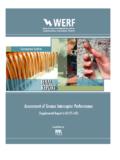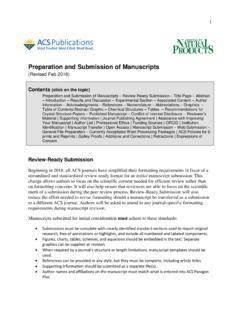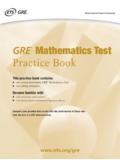Transcription of Mathematics Prerequisites for Success in …
1 Mathematics Prerequisites for Success in introductory StatisticsMany colleges and universities are now exploring multiple pathways to a credit-bearing, college-level Mathematics course. Because the required Mathematics course for a wide variety of majors such as nursing, criminal justice, social work, psychology and kinesiology is statistics, much attention is now focused on providing a productive pathway to order to place students appropriately and in order to design an efficient and effective pathway to statistics for students who require additional preparation, it is important to think carefully about the mathematical Prerequisites for Success in the introductory statistics course. While these Prerequisites include topics typically taught in courses up to and including beginning and intermediate algebra, there are topics in beginning and intermediate algebra that are not necessary for Success in an introductory statistics paper describes the topics and concepts that are considered necessary Mathematics preparation for Success in statistics.
2 In the table that follows, the Mathematics Prerequisites for statistics have been grouped into the following general categories: numbers and the number line, operations on numbers, sets, equations and inequalities, graphing points and lines in two dimensions, and reading tables and graphs and approximating areas. The first column of the table lists mathematical Prerequisites , and the second column provides examples of content topics in the introductory statistics course that are dependent on mastery of the associated mathematical Peck California Polytechnic State University, San Luis ObispoRob Gould University of California, Los AngelesJessica Utts University of California, Irvine President-Elect, American Statistical AssociationThe Charles A. Dana Center invited the authors to present their views on the prerequisite skills that students need to be successful in a college-level statistics course. The authors provide a set of Mathematics Prerequisites that would prepare students for introductory Statistics.
3 This resource is offered to faculty who are reviewing placement and prerequisite requirements in their own more information about the Dana Center s position on prerequisite requirements for introductory Statistics courses, see the Call to Action at The authors have provided a dependable set of Prerequisites for college-level introductory Statistics courses that includes an emphasis on the development of the critical thinking skills our students will need as the changing landscape of the statistics profession continues to impact the requirements for statistical l i t e r a c y . Professor Mary DeHartChair, Statistics Committee American Mathematical Association of Two-Year Colleges (AMATYC)Statement endorsed by the AMATYC Executive BoardMathematics Prerequisites for Success in introductory Statistics page 2 Numbers and the Number LineStudents need to be able to ..In order to ..Plot points and intervals on the number lineMake and interpret dotplotsRepresent an inequality as an interval on the number lineCalculate probabilities for continuous random variables, understand and interpret confidence interval estimatesFind the distance between two points on the number lineCalculate deviations from the mean and calculate z-scoresRound decimalsCalculate numerical summary statistics, test statistics, and confidence intervalsOrder decimal numbersCalculate medians and quartiles, and compare P-values to a significance levelConvert between fractions, decimals, and percentsCalculate and interpret probabilities, calculate margin of error and confidence intervals, interpret confidence levels and Type I and Type II error probabilitiesOperations on NumbersStudents need to be able to.
4 In order to ..Perform signed number arithmeticCalculate residuals, z-scores, numerical summary statistics, test statistics, and confidence interval estimatesCalculate powers of a number (using technology)Calculate the variance and standard deviation of a sample and the value of a chi-square statisticCalculate the square root of a number (using technology)Calculate standard deviation and standard errorUse summation notationCalculate an expected value, the sample mean and standard deviation, the correlation coefficient, the value of the chi-square statistic, and regression coefficientsUnderstand order of operations in expressions and formulasCalculate numerical summary statistics, test statistics, and confidence interval estimatesSetsStudents need to be able to ..In order to ..Understand Venn diagramsUnderstand probability rules and calculationsUse set notationDefine sample spaces and eventsFind the complement of a setDefine events and calculate their probabilitiesFind the union and the intersection of two setsDefine events and calculate their probabilitiesEquations and InequalitiesStudents need to be able to.
5 In order to ..Evaluate algebraic expressionsCalculate numerical summary statistics, test statistics, confidence intervals, z-scores and regression coefficientsSolve a linear equation in one variableFind percentiles for a normal distributionMathematics Prerequisites for Success in introductory Statistics page 3 Graphing Points and Lines in Two DimensionsStudents need to be able to ..In order to ..Plot an ordered pair (x, y) in a rectangular coordinate systemCreate scatterplots and residual plotsUnderstand slope as the change in y associated with a 1-unit change in xUnderstand and interpret regression coefficients in a data contextGiven the equation of a line, draw the graph of the lineGraph the regression lineUse the equation of a line to find the y-value associated with a given x-valueUse the regression line to make predictionsFind the vertical distance between a point and a lineCalculate residualsReading Tables and Graphs and Approximating AreasStudents need to be able to.
6 In order to ..Extract information from tables and graphsInterpret graphical displays of dataGiven the total area under a curve or a histogram, approximate the area of a shaded regionApproximate probabilities and P-values and understand graphical displays of dataBecause data analysis is conducted in context, the practice of statistics involves reading, problem solving, and writing in context. For this reason, experience in applying mathematical tools in real-world settings and interpreting results in context should also be a part of any course that is designed to prepare students for an introductory statistics focus of a contemporary introductory statistics course is primarily on developing statistical thinking and conceptual understanding, with much less emphasis on hand calculations than was the case in the past. Because the use of statistical software and/or graphing calculators is an integral part of the course, previous work with a graphing calculator or with computer applications is desirable, although not with mastery of the Mathematics Prerequisites described here would be adequately prepared for a college-level introductory statistics course.
7 For students who require additional preparation, a pathway that focuses on this content whether preceding the introductory statistics course or as a co-requisite course coordinated with the order of topics in the introductory statistics course would provide an efficient pathway to statistics.



